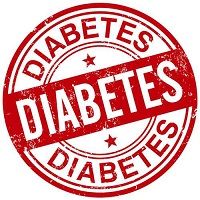Diabetes Eye Problem Undertreated?
The introduction of anti-VEGF drugs should have prevented vision loss and even blindness in many diabetics. But physicians are not using these drugs as frequently as researchers recommend, a study finds.

Treatment of diabetic macular edema (DME) is best done with regimens that include injecting anti-VEGF agents, clinical trials have shown.
But a study in PLOS by Brian VanderBeek and colleagues at Scheie Eye Institute’s Department of Ophthalmology, University of Pennsylvania Perelman School of Medicine in Philadelphia PA found that most patients are apparently being undertreated. Further, many patients are not treated as early as they might be, before vision loss progresses.
Looking at studies of another condition treated with these drugs, age-related macular degeneration (AMD) the authors found that in general, based on Medicare claims data, the use of anti-VEGF drugs increased dramatically from 2006 to 2008.
At the same time there was an increase in office visits and a decrease in photodynamic therapy and thermal laser treatments. But concerns arose when the data showed these AMD patients were not getting the recommended full course of treatment.
To see if the same thing was happening with DME, the team saw that there were studies showing that patients were getting an average of 3.6 injections of anti-VEGF drugs over a year, when 9 to 10 injections is the recommended regimen.
Using a national database they created three patient cohorts to study the main outcome measures corresponding to the years 2002/3, 2006 and 2010.
They found that despite clinical trial results, most DME patients were still being treated with laser.
“Furthermore, contrary to what would be expected, the percentage of patients receiving focal laser therapy increased significantly” across the two-year cohorts in their retrospective analysis.
Similar to the AMD results, the patients with DME were typically receiving only a fraction of the recommended 9 to 10 injections and would need 2.5 times more to meet the optimal standard.
Alarmingly, they found that no more than 41% of patients diagnosed with DME ever received treatment in any of the 1- or 2-year cohorts they reviewed.
“The findings of this study suggest a significant number of DME patients may be under treated, raising concern that visual potential in these patients is not being maximized.,” the team concluded.